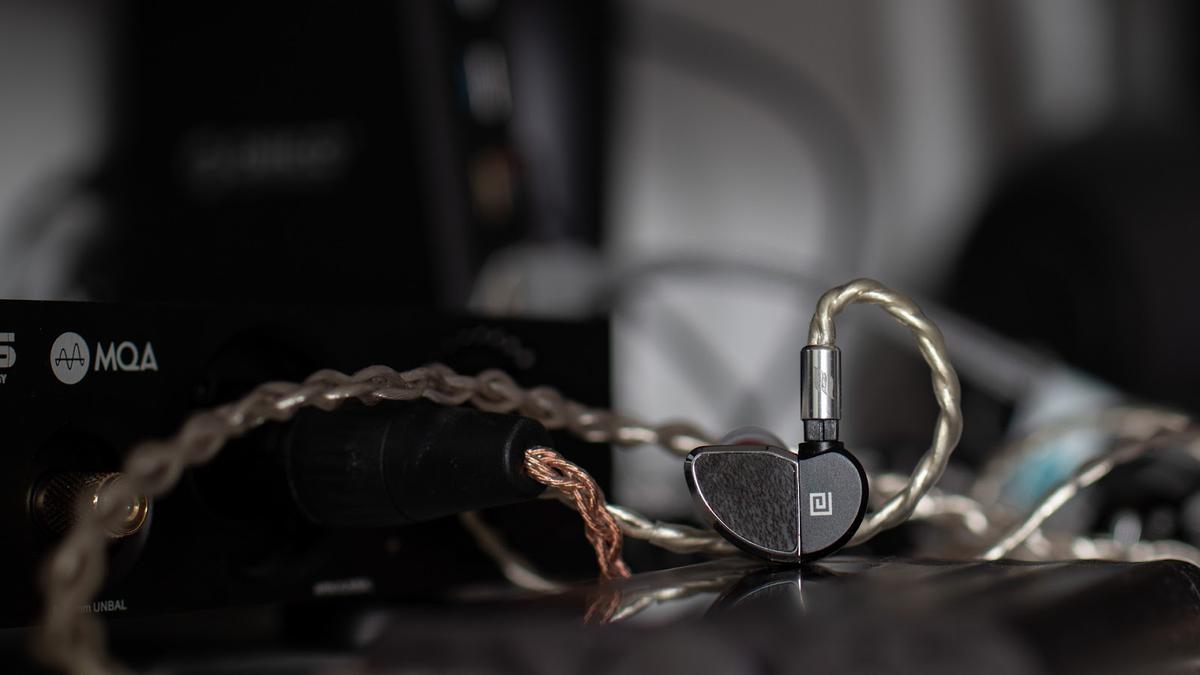The Axiom claim to reduce e-waste and do sport an attractive design. Unfortunately, the lack of accessories, poor fit, and sound quality leave much to be desired.
Effect Audio, based in Singapore, is mostly known for its cable offerings. Not completely alien to IEMs, the King Arthur Limited Edition IEMs launched a few years ago.
- Eco-friendly packaging
- Good build quality
- A modular unit system is handy, and can also be used for sound-tuning
- Bass has good rumble and impact
- Good imaging and staging
- Not the most stable fit
- Mid-bass lacks texture
- Vocals sound strained
- Treble timbre has a metallic sheen
- Incoherent sound, bass driver is noticeably slower than the mids/highs drivers
- Resolution is below-average for the TOTL range
- Questionable pricing
Now, Effect Audio is back with the Axiom, a triple-driver hybrid pair of high-end IEMs, priced near USD$1500. Instead of supplying a budget stock cable, Effect Audio decided to remove it entirely from the Axiom package. The idea is that most TOTL-range buyers should already have a collection of cables that they can re-use with the Axiom.
In an effort to promote sustainability, Effect Audio does not supply a stock cable with the Axiom.
This is a radical move in the IEM space but it is an idea that has been peddled by Apple with their exclusion of charging adapters in the box. Whether you interpret this as a move towards sustainability or a company reducing production costs is up to you.
Regardless, the most important thing about IEMs is how they sound, so let’s see if the Axiom are up to the task.
Technical Specifications
- Form: IEM
- Drivers: 1 x 12mm magnesium dynamic driver with LCP suspension, 2 X Knowles TWFK BA drivers
- Impedance (Ohm): 32 ohms @ 1kHz
- Sensitivity (dB): 112 dB/mW @ 1 KHz
- Frequency Response (Hz): 20 Hz – 16.8 kHz
- Removable Cable: Y, Modular Unit system
- Source Jack: N/A
- Cup/Shell Jack: 2-pin or mmcx
- Weight (g): 10.2 g
Packaging
The Axiom have minimalistic packaging that has multiple layers and appears free from plastic, so bonus points for that sustainable move.

One unique thing about the unboxing experience was the sweet aroma of tea leaves and herbs.
Turns out that there is a tea-bag underneath the IEMs. It’s probably there to absorb moisture, but can apparently be brewed into a cup of tea as well.
In the box
- Effect Audio Axiom IEMs
- Black module unit
- 3 pairs of silicone tips
- Pair of 2-pin terminated modules
- Screwdriver
- A tea bag
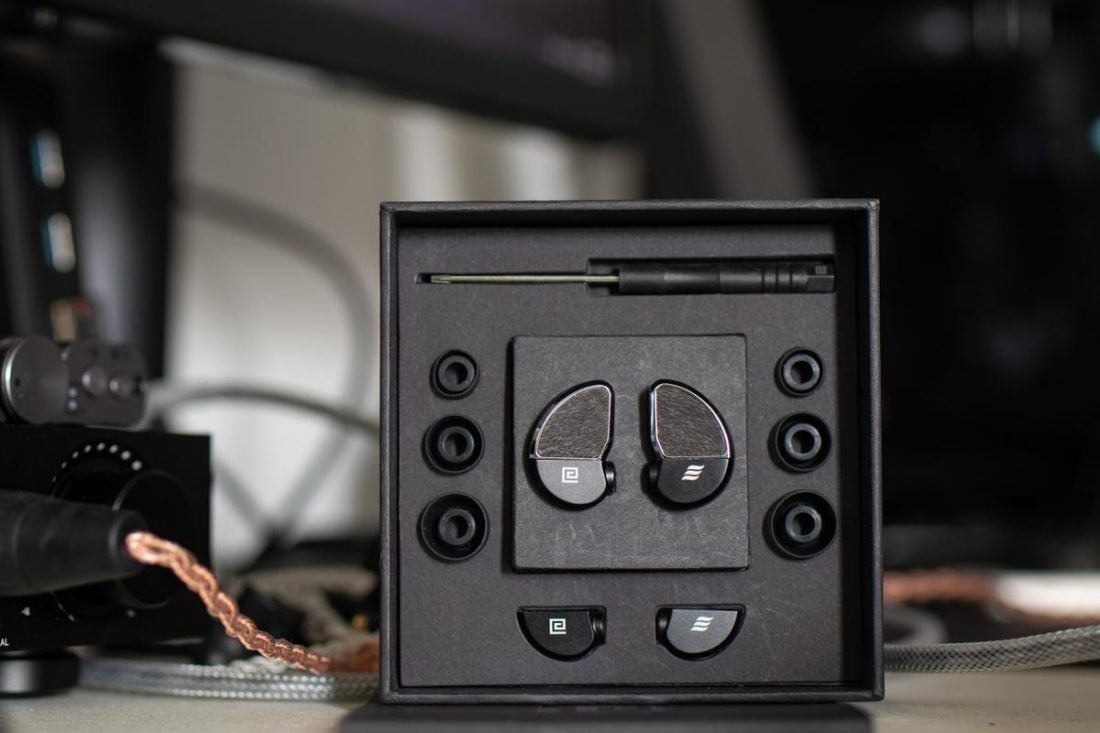
Effect Audio also sent a Cleopatra cable with the review package. This cable is extremely robust and has pure silver plated UP-OCC cores. Each strand is individually enameled, resulting in excellent durability at the cost of some added stiffness.
This is an excellent cable even though the asking price of USD$800 is near the premium segment.
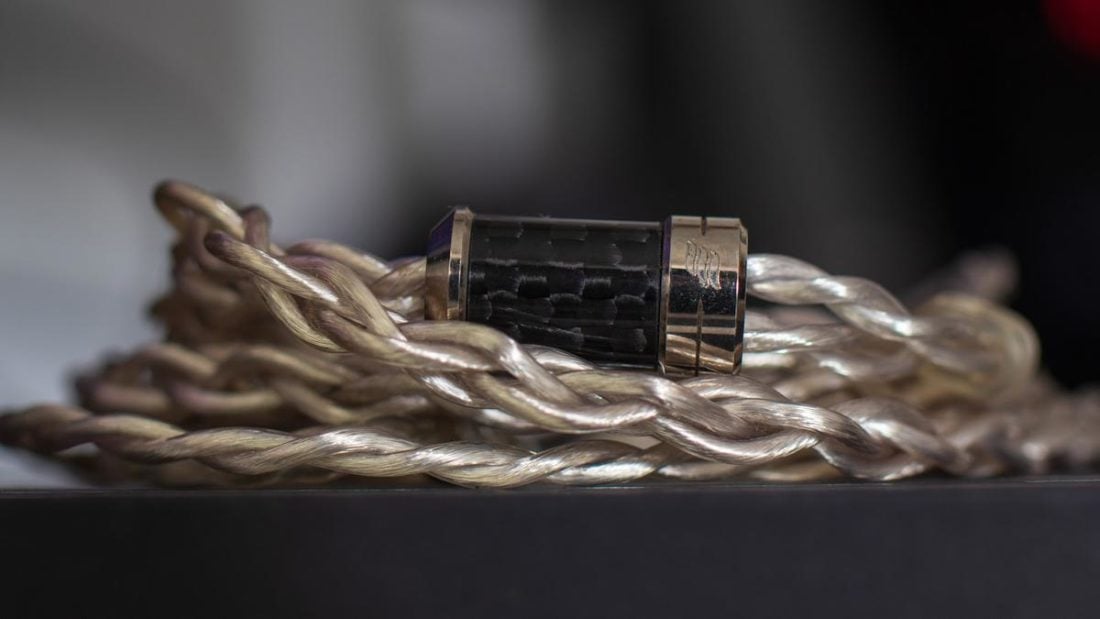
Design
The Axiom have a two-piece design with separate modular units that are affixed to the back of the IEMs via a screw.
The modules are the water drop-shaped pieces you see at the bottom of the packaging above and attached to the IEMs in the picture below. They have four contact pins at the back to connect to the internals. You can find some more impressions about the modules in this head-fi thread.
There is a vent at the base of the connectors and another near the nozzle.
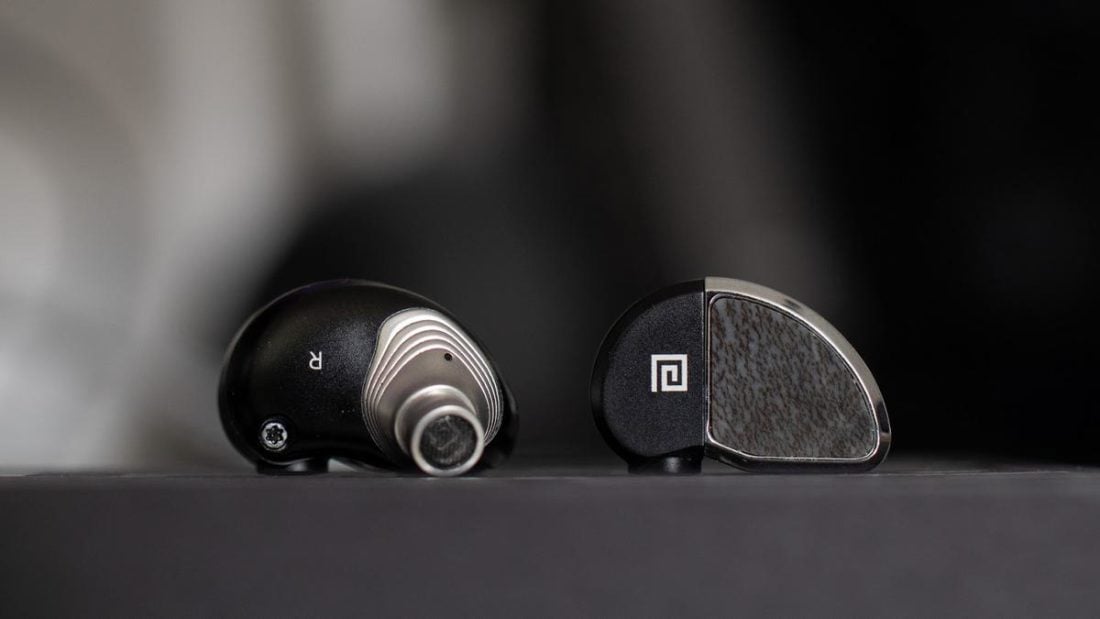
Each module houses the crossover circuit, so Effect Audio can alter the tuning by switching the crossover point. The mechanism appears fairly robust and should last.
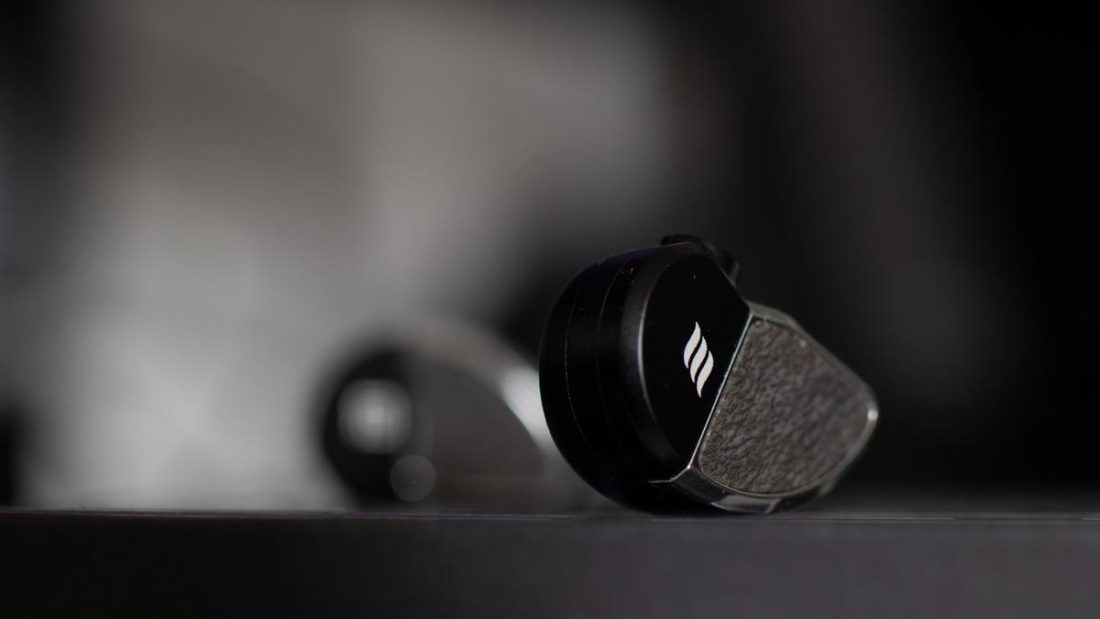
The design is very attractive overall, with subtle attention to detail such as the grooved pattern on the nozzle. The backplate has a marble-like finish that is also unique.
Comfort and isolation
Comfort is good but the fit is unstable due to the heavy shells. Isolation is average due to the aforementioned vents.
Internals
The Axiom have a triple-driver setup with two Knowles BA drivers and one 12mm magnesium-dome driver with an LCP surround. The crossover point is set at 4.8kHz by default.
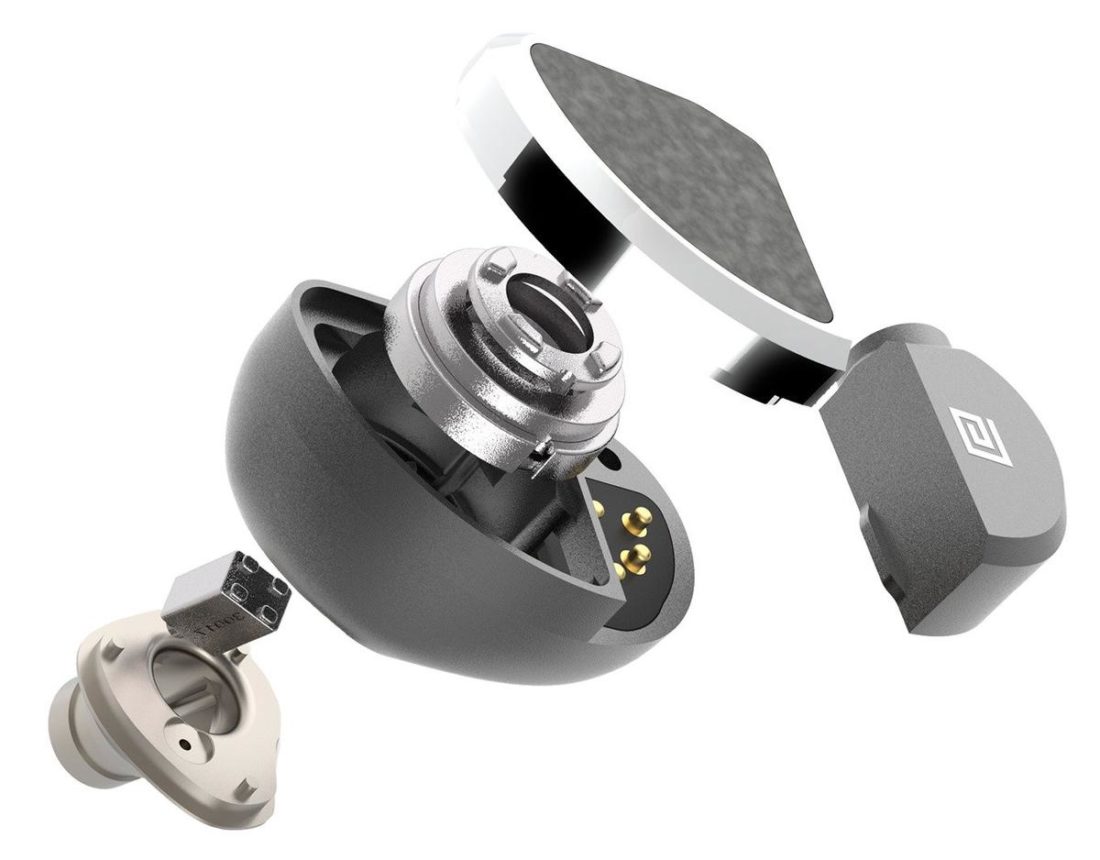
The drivers seem to be in a coaxial arrangement, with the Knowles BA inside the nozzle. It appears that the BA driver is a Knowles TWFK-30071 which is a twin-BA and very small in size, making it ideal for nozzle placement.
However, I did not find any dampers in front of the BA nozzle, which are usually put there to tame resonant frequencies.
Effect Audio Axiom Sound
The Axiom have a V-shaped tuning with a strong bass emphasis.
Whereas Effect Audio calls this “reference tuning” in their promotional materials, I find the Axiom too focused on bass to be considered “reference” or “neutral’.
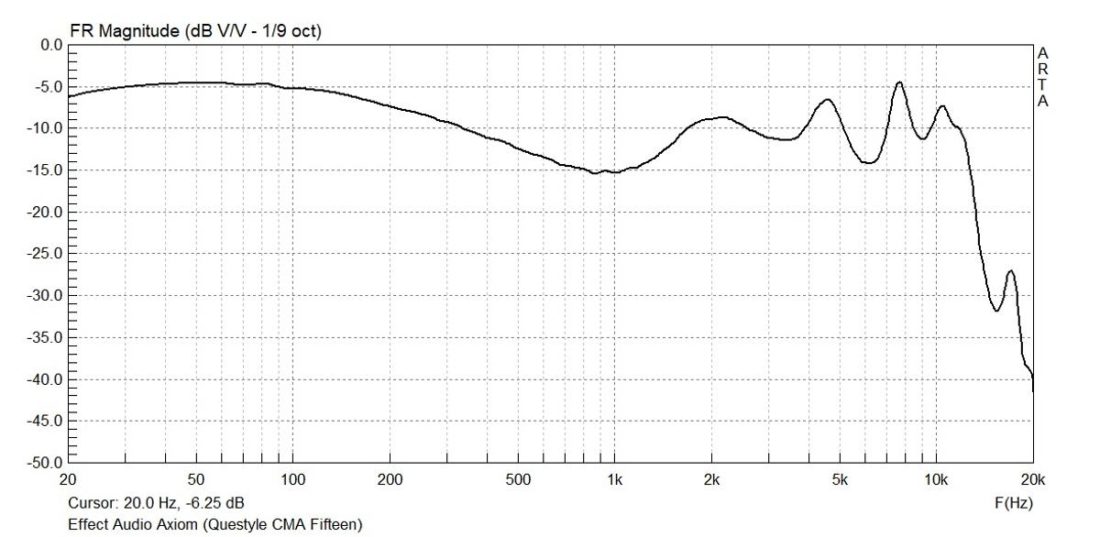
Bass
The bass hits hard, especially in the sub-bass region. Sub-bass rumble is easily noticeable and sudden bass drops have added physicality.
Sadly, this strong sub-bass emphasis masks the mid-bass textures. Moreover, the bass decay is longer than ideal, which results in further loss of low-level details. American Football’s Where Are We Now showcase this loss of mid-bass texture and lack of bass dexterity.
Midrange
Due to the bass prominence, the lower-mids sound thick and have extra body to them. This thickness is counter-balanced by a prominent upper-mid rise and a noticeable lower-treble peak.
Sadly, due to the bass prominence, vocals often get drowned out in bass-heavy mixes.
Moreover, female vocals and high-pitched choruses sound strained. This is likely due to the hollowness near 1kHz. String instruments lack bite, even though low notes have a strong undertone that can sound grand and atmospheric at times.
Treble
The treble is noticeably peaky around 5kHz and this throws off the timbre of cymbals and hi-hats. There is a metallic sheen to high notes that can get distracting. There was no sibilance, which is a plus.
The upper-treble extension is decent and I can hear resonances up to 13kHz, but their peers perform better in this regard.
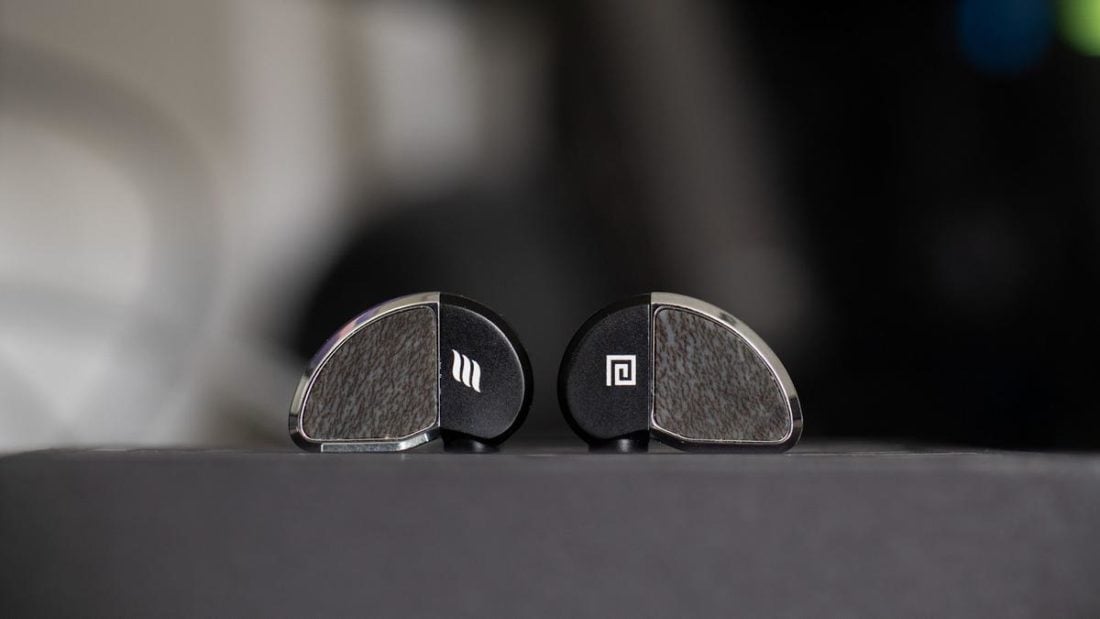
Soundstage and imaging
Soundstage width and depth are above average for the price tag, though not class-leading. Imaging is very good, with both cardinal and ordinal placements of instruments being well replicated.
Dynamics and speed
Macrodynamic punch, e.g. sudden bass drops, is well executed. The Axiom sound “physical”, unlike some of their peers. Unfortunately, microdynamics (subtle gradations in volume) were not as evident.
Driver speed is another letdown, where the dynamic driver is noticeably slower in decay than the BA driver. This results in incoherence and can hamper enjoyment in certain tracks.
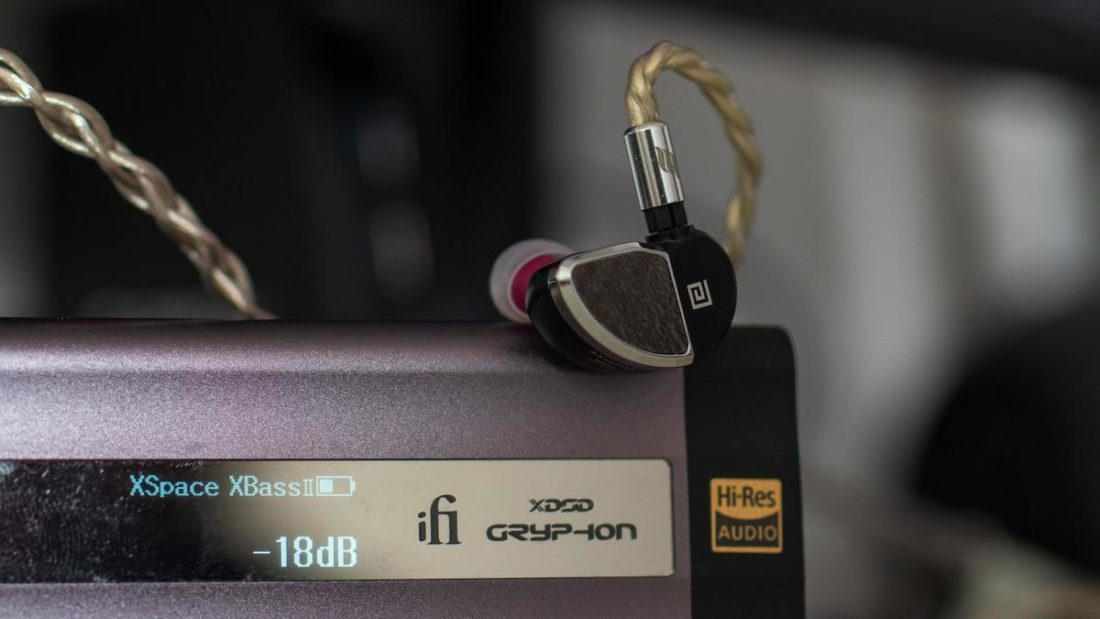
Comparisons
Vs Dunu Zen Pro
The Dunu Zen Pro are priced lower than the Axiom and have a different driver configuration. Nonetheless, they are an interesting alternative to the Axiom as both of these IEMs offer their own version of a “reference” tuning.
The Zen Pro have similarly good build quality but do not look as exotic as the Axiom. Comfort is superior on the Zen Pro, thanks to their slimmer profile and snug fit.
In terms of accessories, Dunu goes the exact opposite route by offering a rich accessory package with an excellent stock cable with swappable terminations. The Zen Pro lack the modularity perks of the Axiom though. You cannot alter the tuning via modules like you can on the Axiom.
As for the sound, the Zen Pro are far more neutral in tone with a forward midrange. The bass quality is excellent, with exceptional bass texture and speed. Axiom falls behind in these factors but if you want a more physical bass slam, then they do that better than the Zen Pro.
I much prefer the midrange on the Zen Pro which have exceptionally articulated lower mids. Upper-mids are devoid of shout and string instruments and percussions sound very natural.
In terms of treble, Zen Pro offer an airier representation with more resolving upper-registers and better timbre.
Soundstage width is better on the Axiom, though depth and height are about on par. Imaging is great on both, but neither have the “holographic” nature that some of their peers can offer. Macrodynamic punch is better on the Axiom whereas the Zen Pro are superior in microdynamics.
To summarize, I prefer the Zen Pro’s tuning and find them more resolving than the Axiom in general. That being said, the bass on the Axiom offers a more exciting presentation in sub-bass-focused tracks.
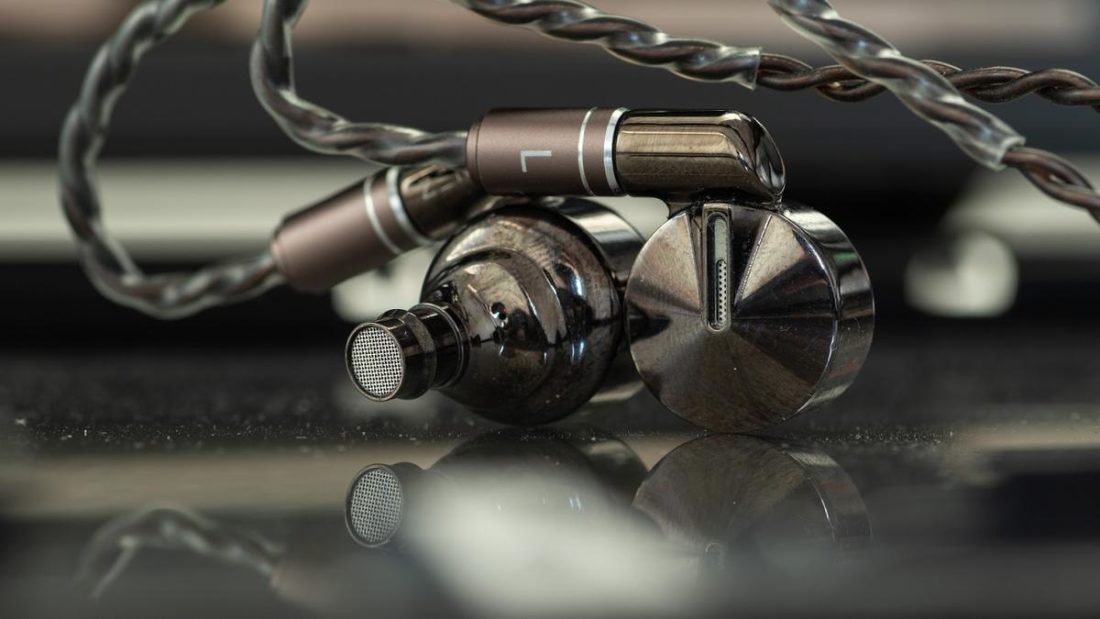
Where to Buy
Conclusion
Effect Audio’s focus on sustainability is laudable and the Axiom are built really well. The sound quality, unfortunately, falls short of expectations.
The tuning is too bass focused and lacks the fine refinement expected in a TOTL product. Moreover, competitors offer better sounding and more resolving IEMs at lower prices. Once you factor in the cost of a good cable (in case you don’t own one), the Axiom fall further behind on the price-to-performance ratio.
The modular concept is very interesting, but at the moment there is only one additional module available. Moreover, the details are scarce and they are out of stock at the time of this writing.
I hope Effect Audio goes back to the drawing board and offers a module with a more balanced tuning that does not hinder the resolution, or perhaps an update to the existing model is in order.
